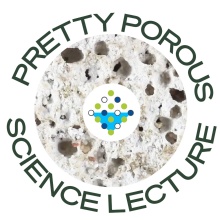We are pleased to announce that Phillip Ligrani, professor at the Department of Mechanical and Aerospace Engineering, University of Alabama (USA), will give the SFB 1313 "Pretty Porous Science Lecture" #24. His talk will be on "Rarefaction slip phenomena in helium and air as investigated within a micro-scale viscous disk pump with surface roughness".
Date: Tuesday, 11 October 2022
Time: 2:00 pm CET
Speaker: Prof. Phillip Ligrani, University of Alabama, Huntsville (USA)
Lecture title: "Rarefaction slip phenomena in helium and air as investigated within a micro-scale viscous disk pump with surface roughness".
Place: The lecture will take place in hybrid form on site. Pfaffenwaldring 31, seminary room 1.103 and via WebEx.
If you are interested in an online participation in the lecture, please contact melanie.lipp@iws.uni-stuttgart.de
Abstract
Slip phenomena are investigated and induced by surface roughness and rarefaction using helium and air within a micro-scale viscous disk pump. Within this device, flow motion is induced by rotation within C-shaped fluid chamber passages formed between a rotating disk and a stationary surface. Accommodation coefficients are determined in a unique manner from experimental results and analysis based on the Navier-Stokes equations. Results from two sets of experiments are described. For the first set of experiments, the fluid chamber passage height ranges from 6.85 m to 29.2 m to give Knudsen numbers from 0.0025 to 0.031 for air and helium. In all cases, roughness size is large compared to molecular mean free path. When channel height is defined at the tops of the roughness elements, slip is believed to be a result of rarefaction as well as fluid shear. With this arrangement, tangential accommodation coefficients decrease and slip velocity magnitudes increase, at a particular value of Knudsen number, as the level of surface roughness increases. When channel height is defined midway between the crests and troughs of the roughness elements, non-dimensional pressure rise data show little or no dependence upon the level of disk surface roughness and working fluid. In addition, slip is largely independent of surface roughness magnitude and mostly due to rarefaction.
The second set of experiments, based upon more recent experimental measurements and analysis, provide additional new information regarding the effects of flow passage height, rotational speed, surface roughness texture size and arrangement, gas species, and volumetric flow rate on rarefaction slip phenomena. Employed are flow passage heights of 9.8 μm, 19.9 μm, and 40.5 μm. Analytic results are included which illustrate local time-averaged velocity variations with radial and normal coordinates, including alterations due to locally reversed flow which becomes more prevalent as the overall volumetric flow rate approaches zero. Also presented are slip velocity magnitudes and accommodation coefficient magnitudes for a range of experimental conditions, which include Knudsen numbers from 0.0075 to 0.021, Reynolds numbers based upon slip velocity and molecular mean free path from 1.15x10-6 to 9.66x10-6, and Reynolds numbers based upon mean flow velocity and flow passage height from 5.6 to 416. In general, variations of slip velocity and accommodation coefficient magnitudes are consistent with flow physics changes which are associated with the presence of surface roughness, changes of disk rotational speed, and different gas species. More complex variations with different levels of average roughness height provide evidence that the character and distribution of surface roughness characteristics also influence near-wall flow behavior and associated slip velocity magnitudes. Even though slip velocity values show trends consistent with expected flow physics changes which are associated with different flow passage heights, accommodation coefficients show inconsistent quantitative trends as flow passage height is altered. Such contradictory characteristics provide an opportunity for the development of an improved analytic model which gives a more physically realistic representation of rarefaction slip flow characteristics within dilute gases.


